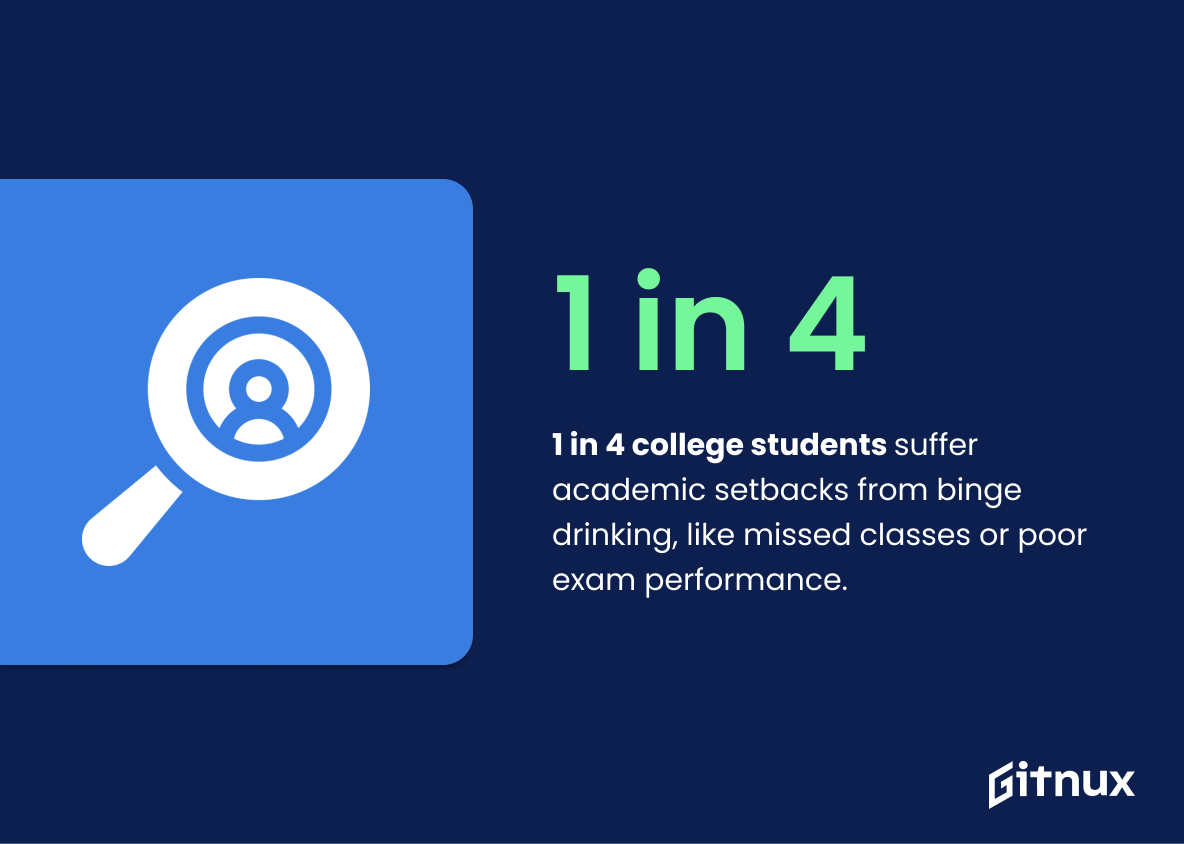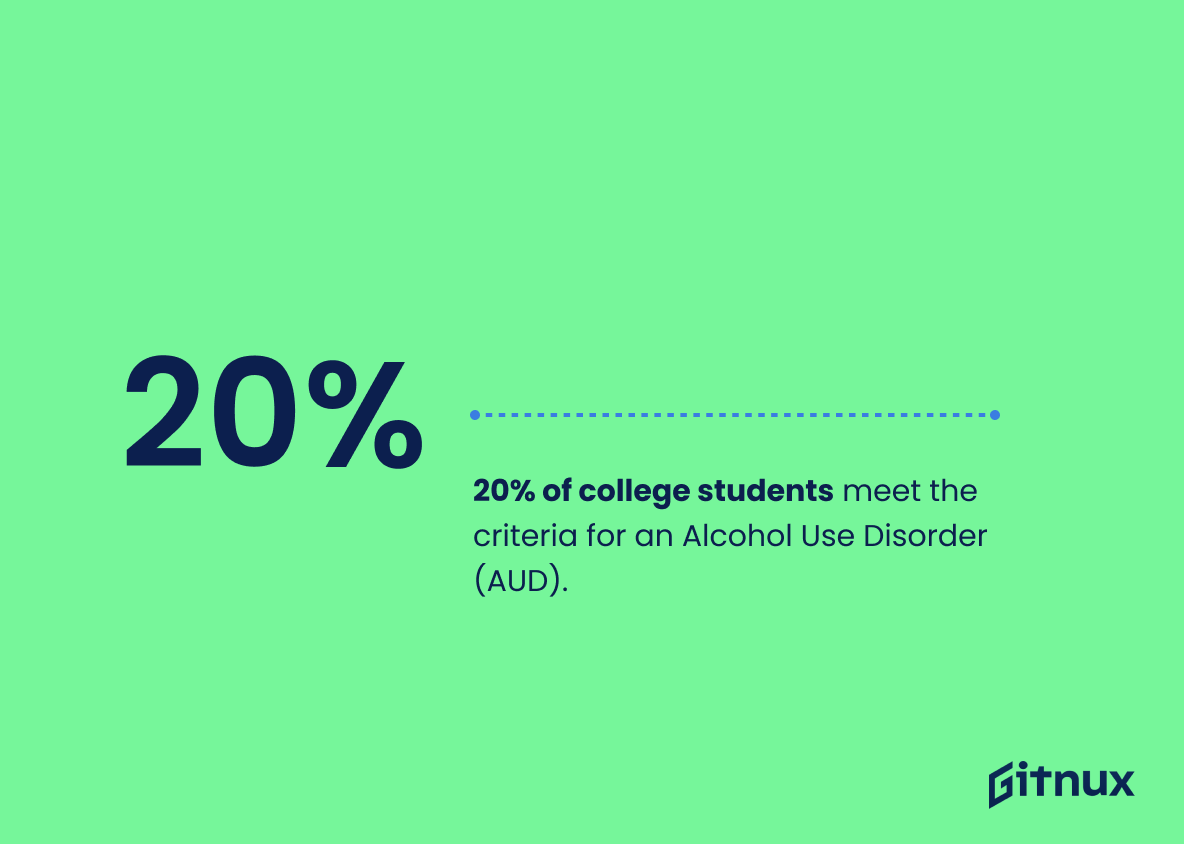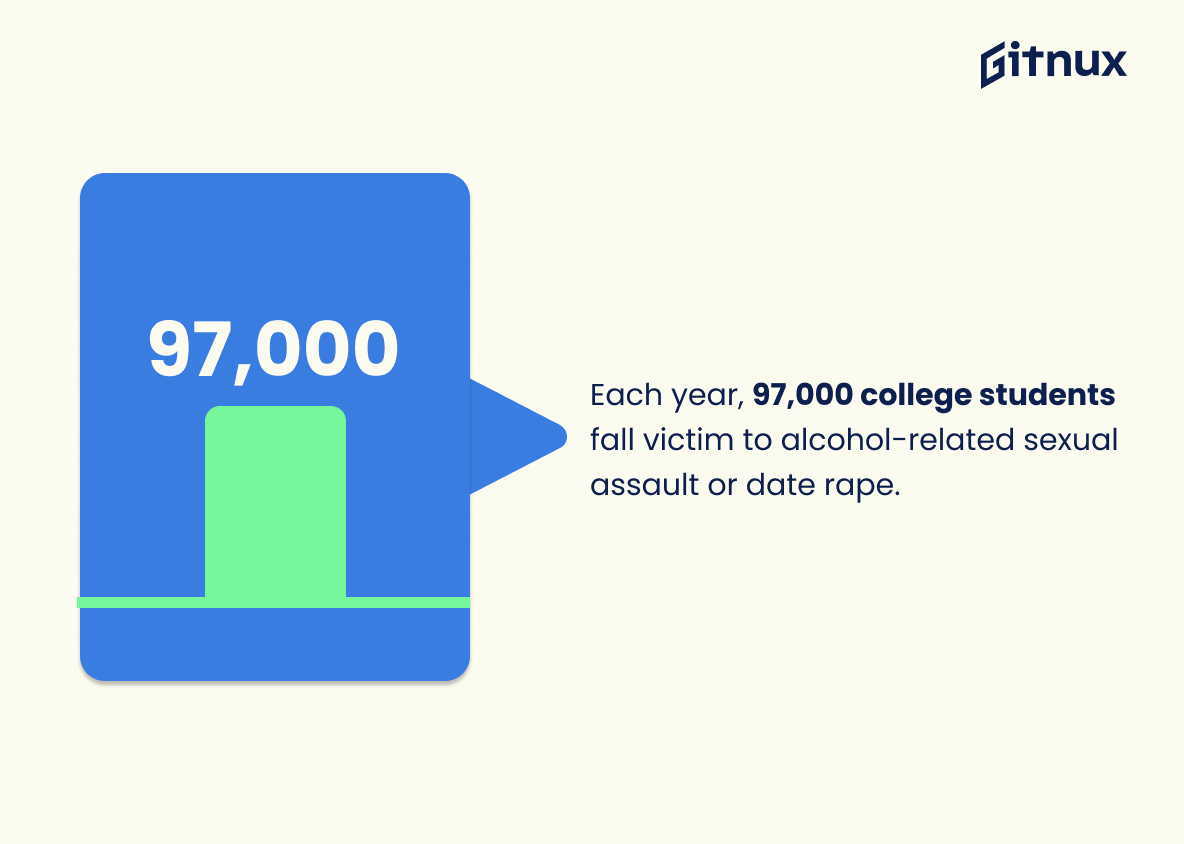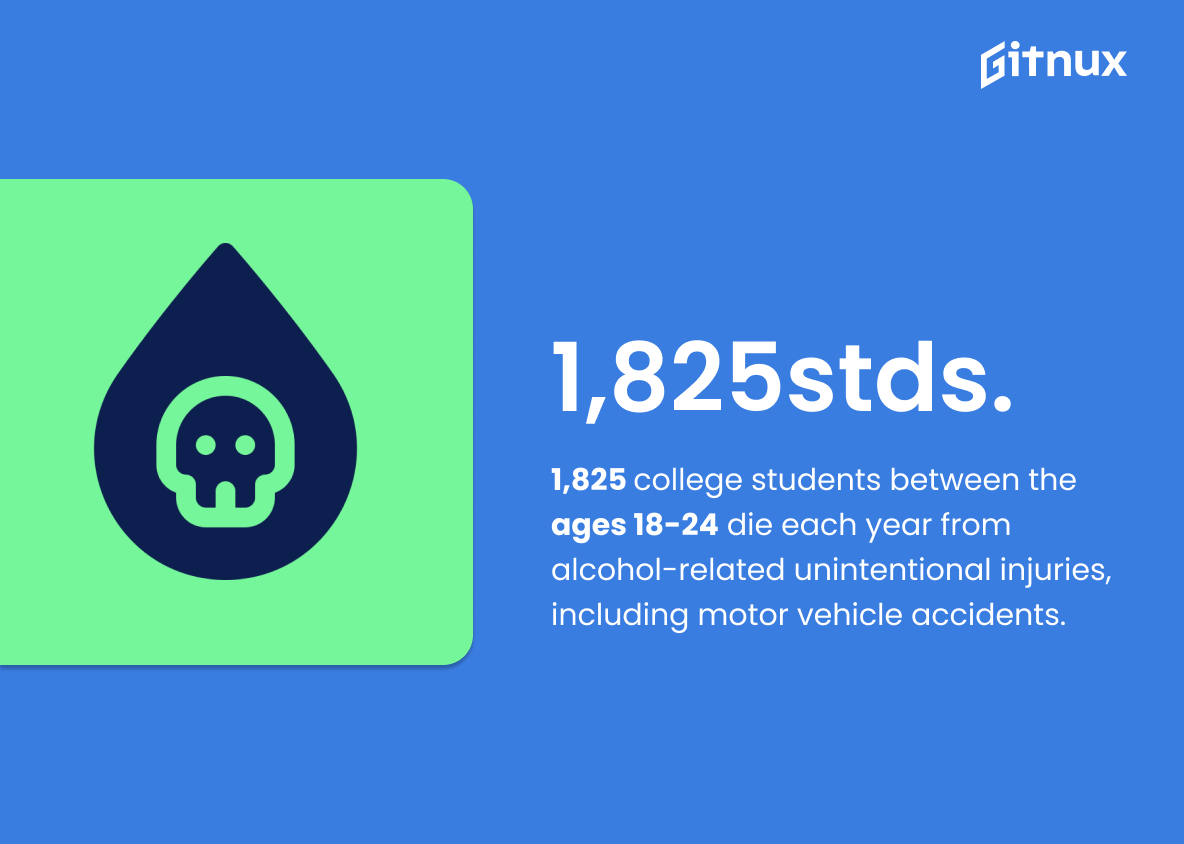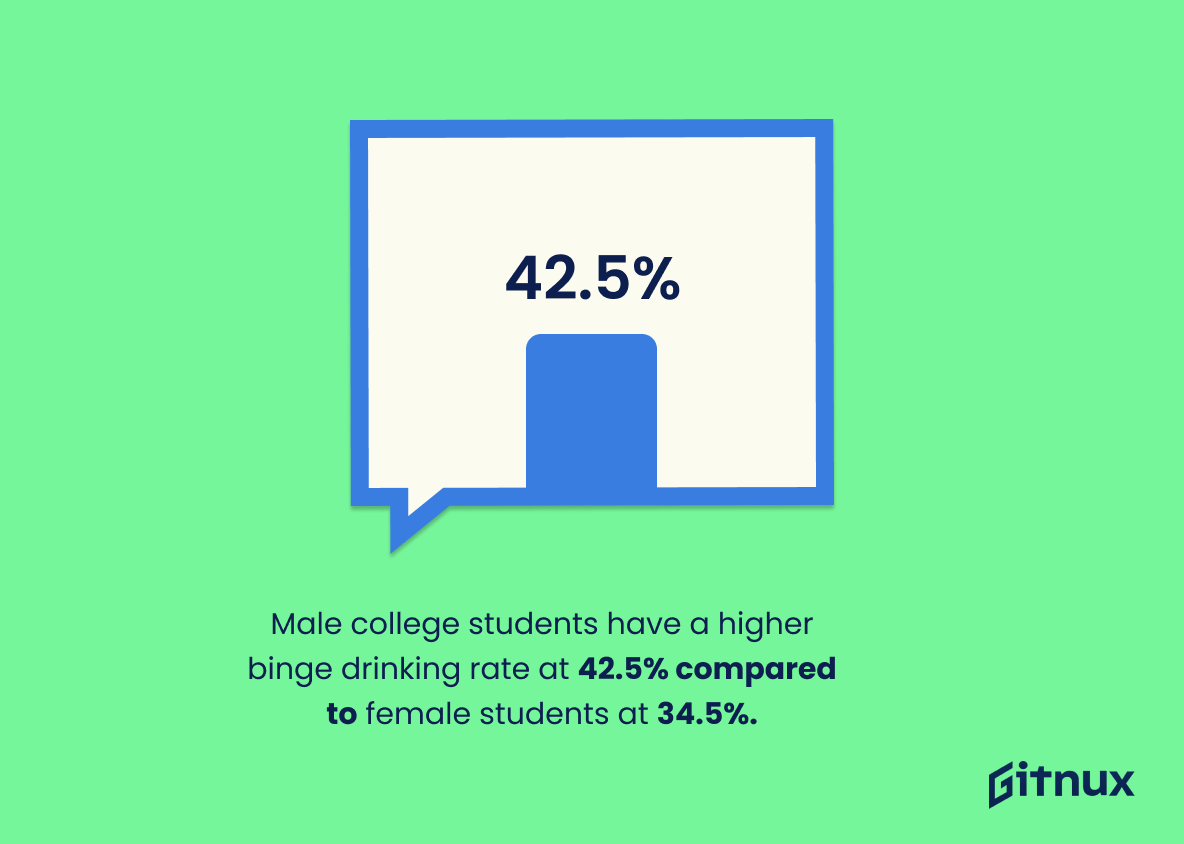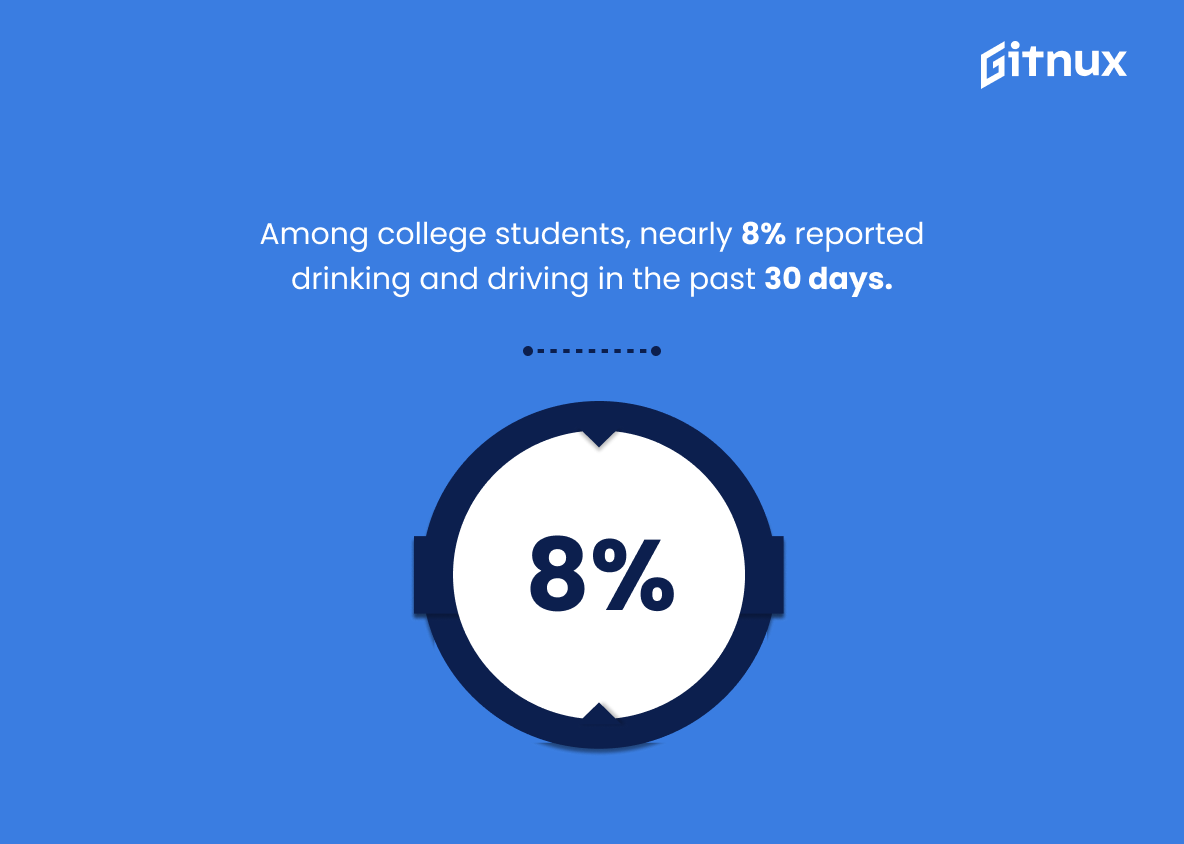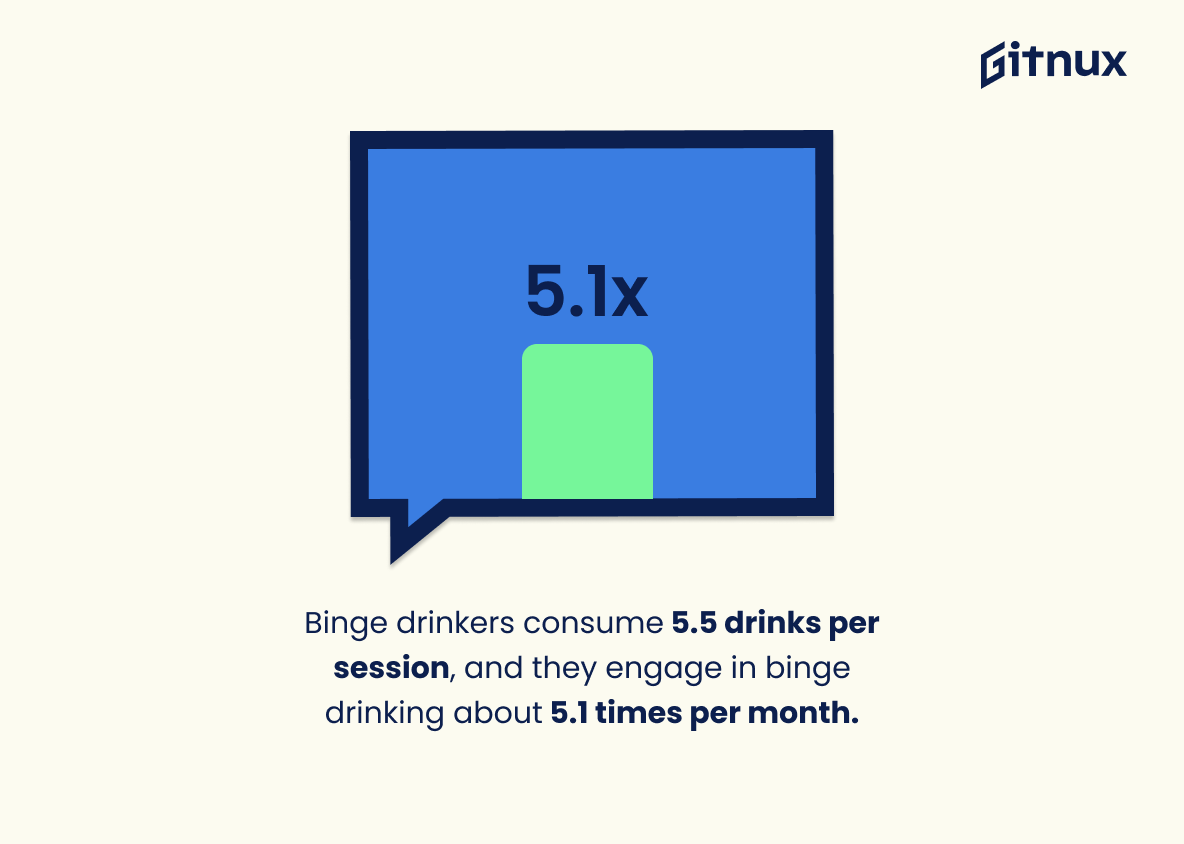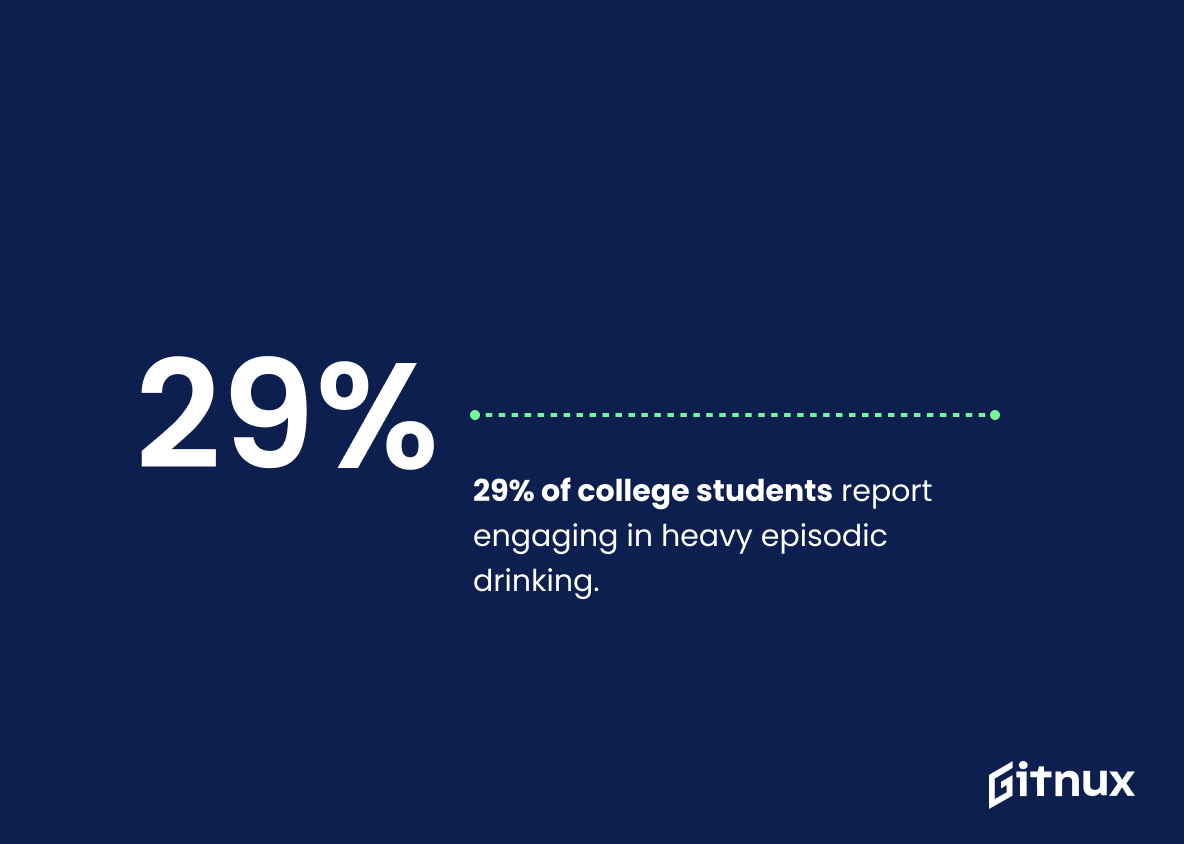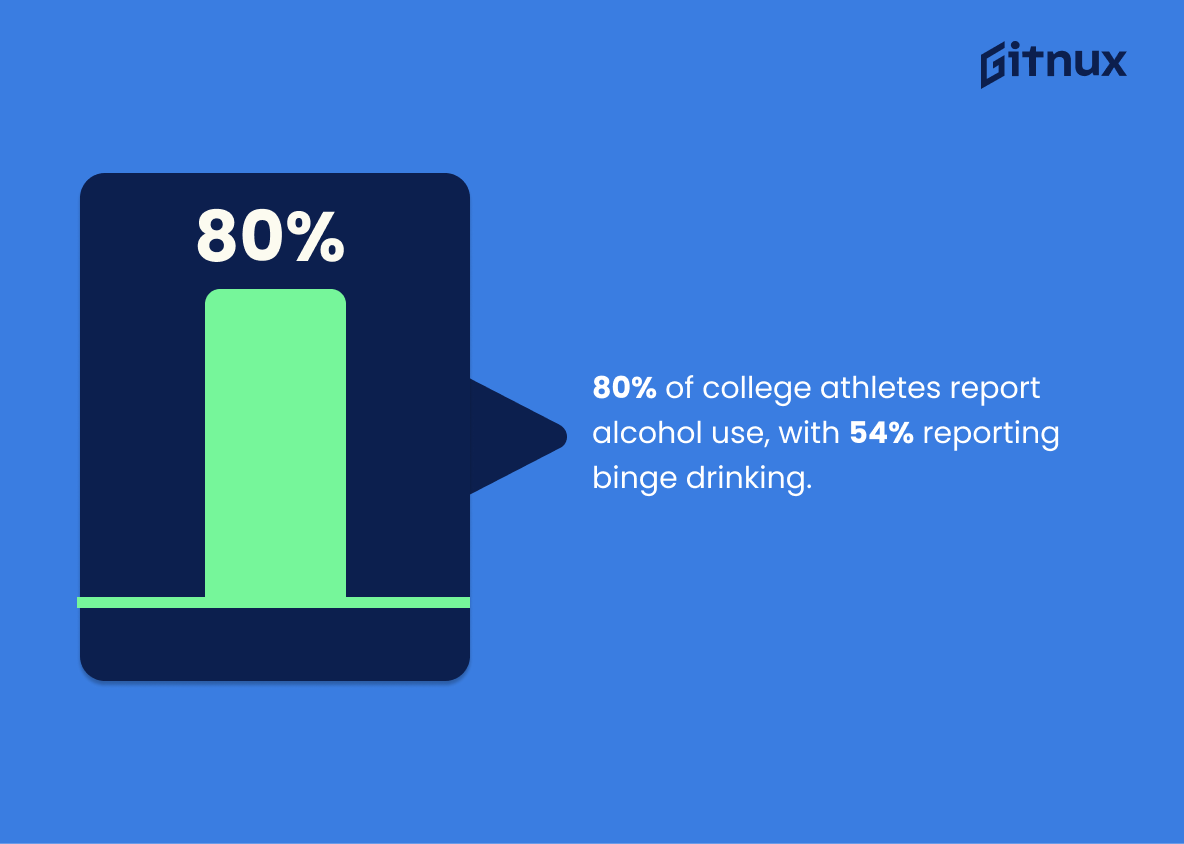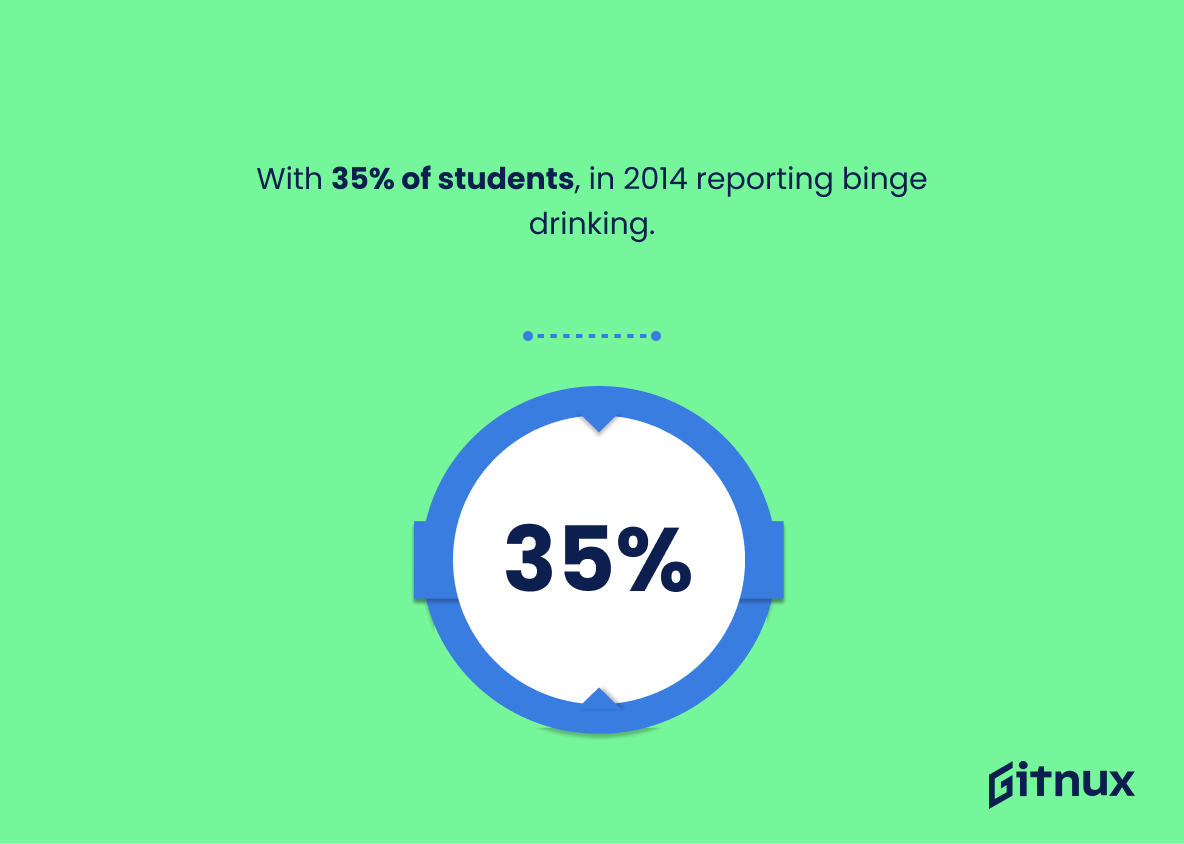College student binge drinking is a serious issue that affects many students across the United States. According to recent statistics, nearly 4 out of 5 college students report consuming alcohol in some form and over 50% admit to engaging in binge drinking activities within the past month. College students between the ages of 18 and 22 are more likely than their non-college peers to engage in this type of behavior, with 1 in 4 reporting academic consequences due to it such as missing class or performing poorly on exams.
Additionally, 696,000 college students aged 18-24 are assaulted each year by another student who has been drinking and 20% meet criteria for an Alcohol Use Disorder (AUD). Furthermore 97,000 fall victim annually to alcohol related sexual assault or date rape while Greek Life members have higher rates of 62.5%.
Unintentional injuries caused by alcohol consumption result in 1,825 deaths per year among those aged 18-24 while male college students tend drink more heavily than female counterparts at 42.5%. Binge drinkers consume around 5 drinks per session five times a month which can lead them into dangerous situations like driving under influence where 8% reported doing so recently according to CDC data; risky sexual behaviors also increase when intoxicated leading 31% having done so twice during last two weeks according research from alcoholismstatistics website . Finally 35 % off campus residents partake compared 22 % living on campus whereas residence hall occupants show even higher rate -42%-of high risk drinking habits .
College Student Binge Drinking Statistics Overview
1 in 4 college students report academic consequences caused by binge drinking, including missing class or performing poorly on exams.
This statistic is a stark reminder of the real-world implications of college student binge drinking. It highlights the fact that excessive drinking can have a direct and negative impact on academic performance, with students missing classes or performing poorly on exams. This is an important statistic to consider when discussing college student binge drinking, as it emphasizes the potential consequences of such behavior.
About 696,000 students between the ages of 18 and 24 are assaulted annually by another student who has been drinking.
This statistic is a stark reminder of the devastating consequences of college student binge drinking. It highlights the fact that alcohol-fueled violence is a serious issue on college campuses, and that it affects thousands of young people every year. It is a call to action for college administrators, faculty, and students to take steps to reduce the prevalence of binge drinking and its associated risks.
20% of college students meet the criteria for an Alcohol Use Disorder (AUD).
This statistic is a stark reminder of the prevalence of alcohol use disorder among college students. It highlights the need for increased awareness and education about the dangers of binge drinking and the importance of seeking help if needed. It also serves as a call to action for college administrators to take steps to reduce the risk of AUD among their students.
Each year, 97,000 college students fall victim to alcohol-related sexual assault or date rape.
This statistic is a stark reminder of the devastating consequences of college student binge drinking. It highlights the fact that alcohol-related sexual assault and date rape are serious issues that need to be addressed on college campuses. It is a call to action for college administrators, faculty, and students to take steps to reduce the prevalence of binge drinking and its associated risks.
Greek Life members are more likely to binge drink than non-Greek affiliated college students, with a rate of 62.5% of fraternity and sorority members participating in binge drinking activities.
This statistic is a stark reminder of the prevalence of binge drinking among Greek Life members. It highlights the need for increased awareness and prevention of this dangerous behavior, especially among college students. It also serves as a warning to those who are considering joining a fraternity or sorority, as it shows the potential risks associated with such an affiliation. Ultimately, this statistic is an important piece of the puzzle when it comes to understanding the scope of college student binge drinking.
1,825 college students between the ages of 18 and 24 die each year from alcohol-related unintentional injuries, including motor vehicle accidents.
This statistic is a stark reminder of the dangers of college student binge drinking. It highlights the fact that alcohol-related unintentional injuries are a major cause of death among college students aged 18-24, and that this is an issue that needs to be addressed.
Binge drinking rates are higher among male college students, with approximately 42.5% of male students engaging in binge drinking compared to 34.5% of female students.
This statistic is a telling indication of the prevalence of binge drinking among college students, particularly among males. It highlights the need for greater awareness and education about the dangers of binge drinking, as well as the need for more effective strategies to reduce the rate of binge drinking among college students.
2.7 million college students between the ages of 18 and 24 binge drink three or more times per week.
This statistic is a stark reminder of the prevalence of binge drinking among college students. It highlights the fact that millions of young adults are engaging in a dangerous behavior that can have serious consequences. It is a call to action for parents, educators, and administrators to take steps to reduce the risks associated with binge drinking and to ensure that college students are making healthy decisions.
College students consume about 4.0 drinks per binging session, with 70% of binge drinking episodes involving four to six drinks.
This statistic is a telling indication of the prevalence of binge drinking among college students. It reveals that the majority of college students who engage in binge drinking consume four to six drinks per session, highlighting the potential for alcohol-related harm. This statistic is an important reminder of the need for college students to be aware of the risks associated with excessive drinking.
Among college students, nearly 8% reported drinking and driving in the past 30 days.
This statistic is a stark reminder of the dangers of college student binge drinking. It highlights the fact that, despite the risks, a significant portion of college students are still engaging in the dangerous behavior of drinking and driving. This statistic serves as a call to action for college administrators, parents, and students alike to take steps to reduce the prevalence of this dangerous behavior.
College students who binge drink are more likely to engage in risky sexual behaviors.
This statistic is a stark reminder of the potential consequences of college student binge drinking. It highlights the fact that not only can excessive alcohol consumption lead to physical and mental health issues, but it can also lead to risky sexual behaviors that can have long-term implications. This statistic is an important reminder that college students should be aware of the risks associated with binge drinking and take steps to ensure their safety.
On average, binge drinkers consume 5.5 drinks per session, and they engage in binge drinking about 5.1 times per month.
This statistic is a powerful indicator of the prevalence of binge drinking among college students. It shows that not only are students engaging in binge drinking on a regular basis, but they are also consuming a large amount of alcohol each time they do so. This is a concerning trend that should be addressed in order to ensure the safety and well-being of college students.
29% of college students report engaging in heavy episodic drinking (five or more drinks in a row at least once in the past two weeks).
This statistic is a stark reminder of the prevalence of binge drinking among college students. It highlights the fact that a significant portion of college students are engaging in a behavior that can have serious consequences, both in the short-term and long-term. It is a call to action for college administrators, parents, and students alike to take steps to reduce the risks associated with binge drinking.
80% of college athletes report alcohol use, with 54% reporting binge drinking.
This statistic is a stark reminder of the prevalence of alcohol use and binge drinking among college athletes. It highlights the need for greater awareness and education about the risks associated with excessive alcohol consumption, as well as the importance of providing resources and support to college athletes who may be struggling with alcohol use.
Binge drinking rates among college students have remained relatively stable between 1999 and 2014, with 35% of students in 2014 reporting binge drinking.
This statistic is a crucial indicator of the prevalence of binge drinking among college students, providing a snapshot of the current state of the issue. It is a valuable piece of information for anyone looking to understand the scope of the problem and the potential risks associated with it. By showing that the rate of binge drinking has remained relatively stable over the past 15 years, this statistic serves as a reminder that college student binge drinking is still a major issue that needs to be addressed.
Around 35% of college students living off-campus engage in binge drinking compared to 22% of students living on-campus.
This statistic is a telling indication of the prevalence of binge drinking among college students living off-campus. It suggests that students living off-campus are more likely to engage in binge drinking than those living on-campus, which could be due to a variety of factors such as access to alcohol, peer pressure, or lack of supervision. This information is important to consider when discussing college student binge drinking statistics, as it provides insight into the environment in which students are engaging in this behavior.
Approximately 42% of college students living in residence halls engage in high-risk drinking behaviors.
This statistic is a stark reminder of the prevalence of high-risk drinking behaviors among college students living in residence halls. It highlights the need for greater awareness and education about the dangers of binge drinking and the importance of making responsible decisions when it comes to alcohol consumption.
Conclusion
The statistics presented in this blog post demonstrate the prevalence of binge drinking among college students. Nearly 4 out of 5 college students report that they have consumed alcohol to some degree, with over 50% admitting to binge drinking in the past month.
College students between the ages of 18 and 22 are more likely to engage in binge drinking than their non-college peers, and 1 in 4 college students report academic consequences caused by such activities. Additionally, 696,000 students between these same age groups are assaulted annually due to another student’s consumption of alcohol; 20% meet criteria for an Alcohol Use Disorder (AUD); 97,000 fall victim to alcohol-related sexual assault or date rape; 62.5% Greek Life members participate in binging activities; 1,825 die each year from related unintentional injuries; 42.5% male compared 34.5 female partake regularly; 2.7 million do so three times a week on average consuming four drinks per session 70%; 8 percent reported driving under influence last 30 days while 31%, 29%, 35%, 80%, 54 % respectively engaged high risk behaviors living off campus residence halls etc.. Binge rates remain stable since 1999 at 35%.
These figures indicate that there is a serious problem with excessive alcohol use amongst young adults attending higher education institutions which needs addressing through prevention efforts as well as treatment options for those already affected by AUDs or other negative outcomes associated with heavy episodic drinking habits
References
0. – https://www.responsibility.org
1. – https://www.ncbi.nlm.nih.gov
2. – https://www.hazeldenbettyford.org
3. – https://www.scholars.unh.edu
4. – https://www.samhsa.gov
5. – https://www.colorado.edu
6. – https://www.cdc.gov
7. – https://www.niaaa.nih.gov
8. – https://www.pubs.niaaa.nih.gov
9. – https://www.collegedrinkingprevention.gov
